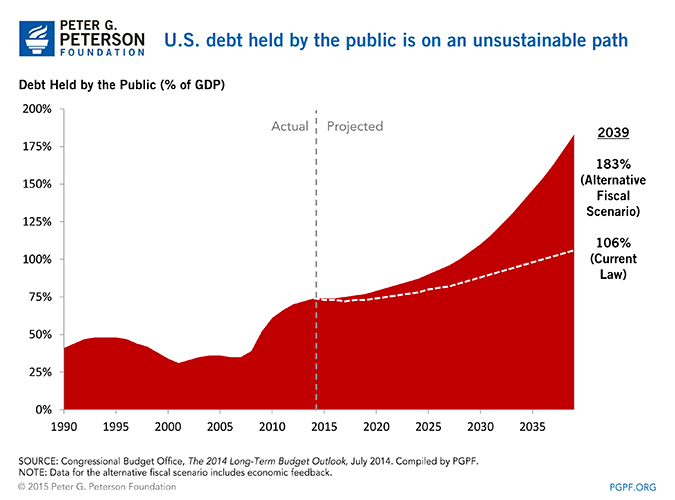You are here
CBO Analysis: Debt Remains High under President's Budget

Today, the Congressional Budget Office (CBO) released its analysis of the president’s fiscal year 2016 budget. Using their own economic and technical assumptions, CBO finds that under the president’s budget, debt would remain at historically high levels over the next ten years, interest costs would climb sharply, and mandatory spending would continue to grow while funding for discretionary programs declines to historically low levels.
Debt remains high. CBO estimates that while deficits under the president’s budget would average 2.6 percent of GDP over the next 10 years — slightly below projections under current law — federal debt would remain historically high. In 2025, debt would be 73 percent of GDP, roughly double its 50-year historical average.
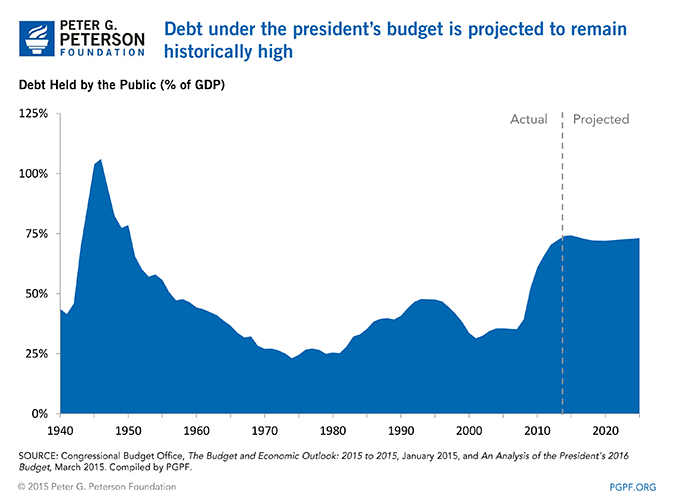
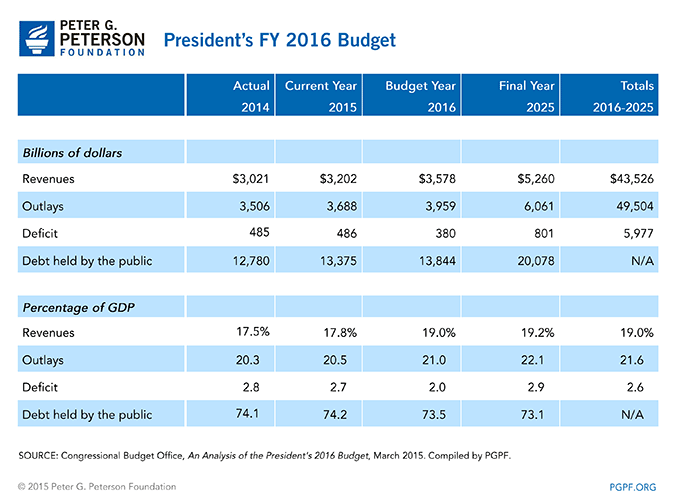
Interest costs soar. Interest costs would nearly triple under the president’s budget from $277 billion in 2016 to $769 billion in 2025. Over these ten years, interest costs total $5.4 trillion. Rising interest costs will stem primarily from growing debt levels and higher interest rates.
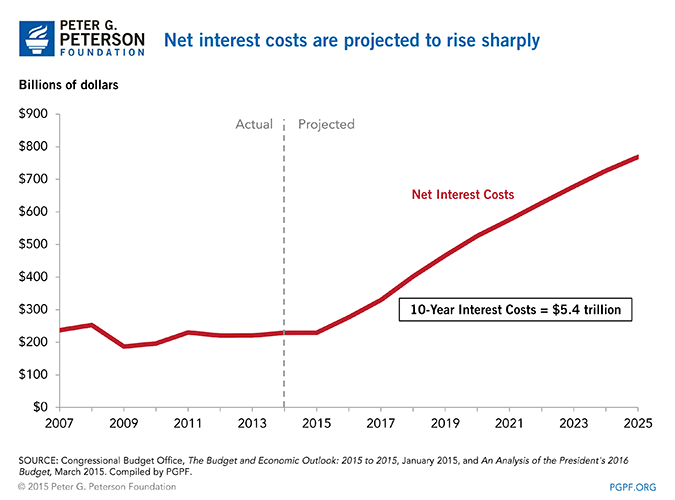
Discretionary programs are squeezed. Under the president’s budget, growing spending on interest and mandatory programs puts increasing pressure on discretionary programs. Spending on interest and mandatory programs are projected to grow from 68 percent of the budget in 2015 to 78 percent in 2025; over the same period, discretionary spending is projected to shrink from 32 percent of total spending in 2015 to 22 percent in 2025. Both as a share of the budget and as a percentage of GDP, the level of discretionary spending would be well below historical levels. Discretionary spending funds a myriad of important services and programs, including research and development, education, and infrastructure.
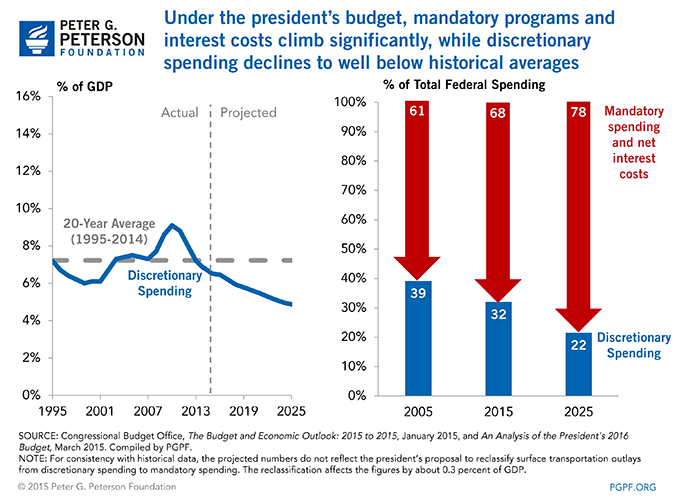
Long-term fiscal challenges remain. Stabilizing the debt over the long term is a key part of any sound fiscal policy and viable economic strategy for America. Until we confront these budgetary challenges and close the structural imbalance between spending and revenues, federal debt will climb to unsustainable levels and put our economy and future prosperity at risk. Addressing our long-term fiscal challenges is critical for ensuring that America has adequate resources for investing in our future, protecting critically important programs, and creating robust economic growth and opportunity for future generations.
